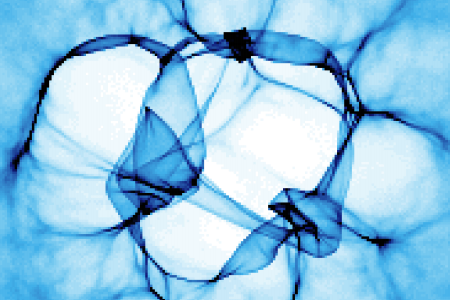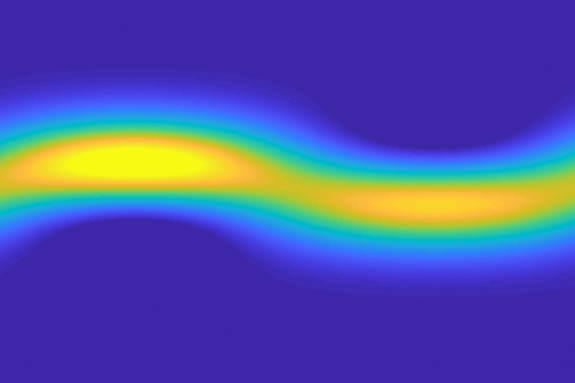Fusion Plasmas
Bringing Star Power to Earth
Auxiliary Heating

We're investigating novel approaches to overcoming obstacles currently hindering the inertial fusion programme. One such example is "auxiliary heating" which is our proposed method of depositing additional energy into the fusion fuel using crossing electron beams. This, we hope, will increase the temperature of the fusion fuel and push us closer to ignition..
Ion Acceleration

To understand the dynamics of fusion implosions we need diagnostics that can penetrate the plasma and interact in a clearly measurable way. Our work in this field is currently focusing on novel acceleration mechanisms that can generate monoenergetic fast protons and light ions which could be used to image the interior of hohlraums via proton radiography.
Proton Radiography

Sending a beam of energetic protons through a plasma leaves an imprint of electromagnetic fields in the plasma on the protons' velocities, in the form of deviations from their initial straight-line trajectories. Proton radiography is a powerful diagnostic, but presents many subtleties which must be accounted for in modelling and analysis to be useful in experiments.
Raman Amplification
The plasma Raman instability can compress existing nanosecond pulse lasers to femtosecond duration. We have found a new amplifier configuration that maximises the output power and reduces requirements on the initial seed laser. Raman amplification could be used to generate petawatt pulses for fast ignition fusion.
VFP Modelling

The hotspot of a compressed inertial fusion fuel produces alpha particles from fusion reactions, which then heat the rest of the fuel. Modelling the true effects of density and temperature gradients, as well as ablator mix, requires fully kinetic simulations.